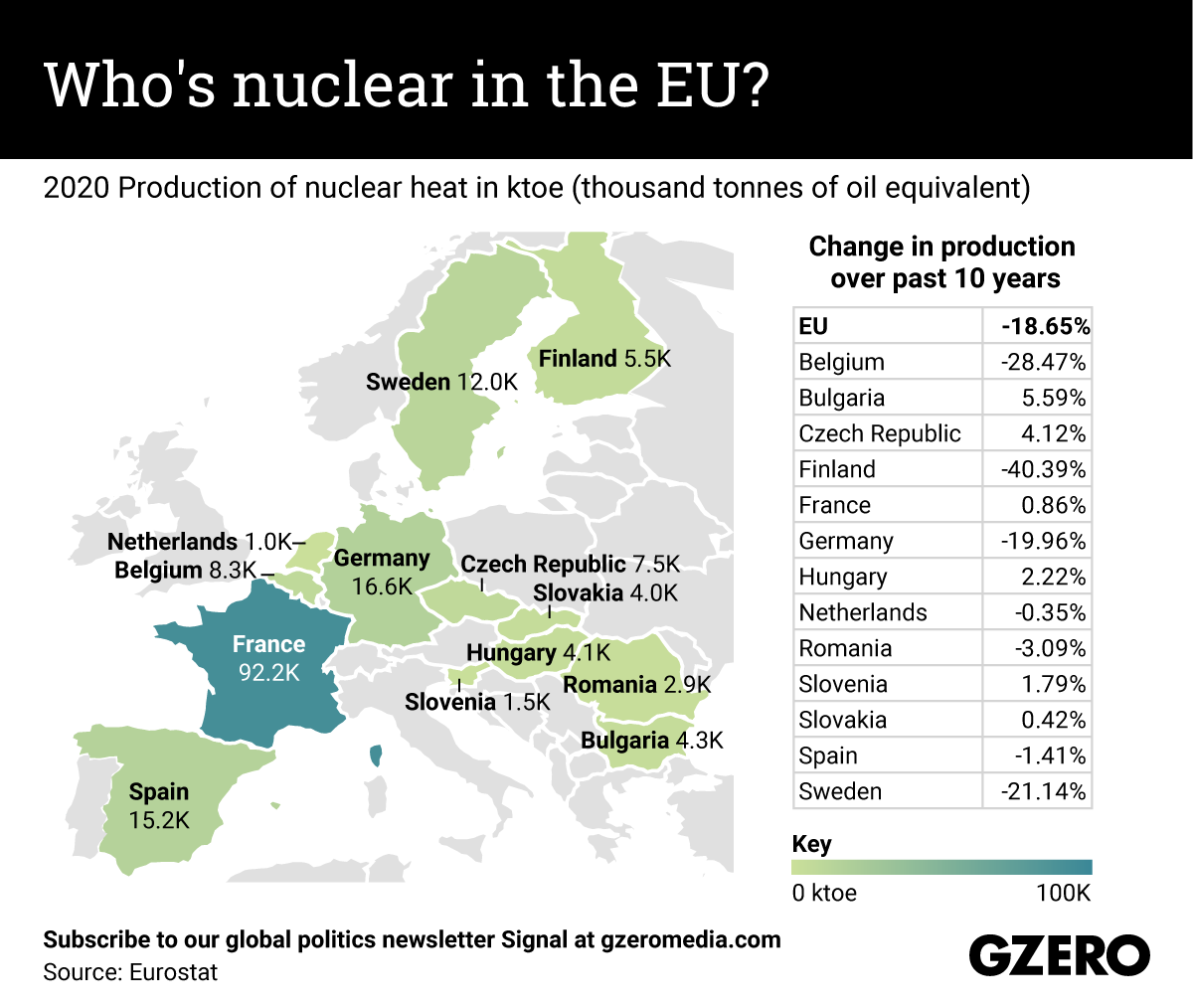When Russian troops shelled the Zaporizhzhia nuclear plant in southeastern Ukraine on Friday, many feared it could cause a Chernobyl-like catastrophe. But even before this event, the status of nuclear energy within Europe has been a massive point of contention. Since the Fukushima disaster in 2011, European Union states have bolstered their guidelines for nuclear power safety, but some have been trying to phase it out altogether. Last month, the European Commission outlined how nuclear energy could be labeled a “green” investment (presuming the plants can safely dispose radioactive waste). Critics labeled the move as “greenwashing,” and Austrian Chancellor Karl Nehammer tweeted that “Nuclear power is neither ‘green’ nor sustainable.” So how might this latest scare in Ukraine change Europe’s nuclear calculus, if at all? We take a look at which EU states produce the most nuclear heat, and how that’s changed since 2011.
More from GZERO Media
"We are seeing adversaries act in increasingly sophisticated ways, at a speed and scale often fueled by AI in a way that I haven't seen before.” says Lisa Monaco, President of Global Affairs at Microsoft.
Ian Bremmer shares an update from Abu Dhabi, a place he calls “the global capital for AI development.”
US President Donald Trump has been piling the pressure on Russia and Venezuela in recent weeks. He placed sanctions on Russia’s two largest oil firms and bolstered the country’s military presence around Venezuela – while continuing to bomb ships coming off Venezuela’s shores. But what exactly are Trump’s goals? And can he achieve them? And how are Russia and Venezuela, two of the largest oil producers in the world, responding? GZERO reporters Zac Weisz and Riley Callanan discuss.
Former New Zealand Prime Minister Jacinda Ardern says AI can be both a force for good and a tool for harm. “AI has either the possibility of…providing interventions and disruption, or it has the ability to also further harms, increase radicalization, and exacerbate issues of terrorism and extremism online.”
As calls for UN reform grow louder, Executive Director of GWL Voices and former General Assembly President María Fernanda Espinosa warns that global peace efforts remain too reactive and that true reform begins with prevention.
Tanzania has been rocked by violence for three days now, following a national election earlier this week. Protestors are angry over the banning of candidates and detention of opposition leaders by President Samia Suluhu Hassan.
Hard Numbers: Trump administration lowers refugee limit, 6,7 enshrined in the dictionary, Jamaica’s preparedness paid off in Hurricane Melissa
7,500: The Trump administration will cap the number of refugees that the US will admit over the next year to 7,500. The previous limit, set by former President Joe Biden, was 125,000. The new cap is a record low. White South Africans will have priority access.
Think you know what's going on around the world? Here's your chance to prove it.
